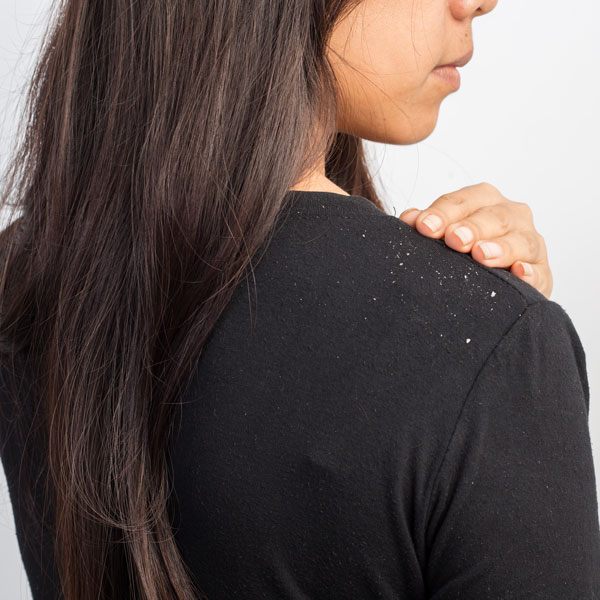
For people who always seem to have those embarrassing little white flakes on the shoulder of that black shirt or falling from their hair, this is a little bit more information on what causes it and how to treat it.
Dandruff is a buildup of sticky, oily skin cells on the scalp. It is caused by overproduction and then sheds as either clumps or, more often, those little white flakes. It is also common to associate itching on the scalp with dandruff, but in recent years many studies have identified it as more likely being the cause of a fungus called malassezia. This fungus is found on the scalps of many people, but is overabundant on people with dandruff.
Most people think that flakes are caused only by dandruff, and therefore Head and Shoulders shampoo should fix the problem. That isn’t always the case though. Flakes can be caused by all kinds of different things such as having a dry scalp from a buildup of hairstyling products like gels or hairsprays. Even minoxidil, commonly known as Rogaine, can dry out the skin on the scalp and lead to flaking. (Side note: This is why we recommend not using Rogaine/minoxidil for at least 1 month following a hair transplant.)
So how can you tell if it is dandruff or something else that you are dealing with? The best ways to identify whether it is dandruff, dry skin, styling product buildup, or Rogaine use is typically by determining where they are located, what the flakes look like, and whether itching is associated.
For dandruff, the flakes will be white and have a heavy, thick texture. Itching may occur, but it will be all over the scalp, not just in a single area. Flakes can be seen on the hair and clothes as well as on the scalp.
Styling product buildup will not typically look white like dandruff. Instead, it will appear translucent or even off-white, depending on the product used. Itching can occur, but usually only in the areas where the product is used. Itching can be worse for people with sensitive skin who use highly scented products. Most of the time, flakes will be visible only on the hair and not directly on the scalp.
Flaking from minoxidil will occur in what looks like scaly sheets where the medication was used. If itching does occur, it is only in the specific area where it was applied.
Treating dandruff is a fairly common treatment; therefore, you will have a tonne of options. If it is fungus-related, the best option is to use a product like Nizoral that contains Ketoconazole, which is an effective antifungal ingredient.
The most common treatment for dandruff is zinc pyrithione. This is the main active ingredient in Head and Shoulders and Selsun Salon, and it works as a one-two combo by discouraging bacteria and being an antifungal medication.
Selsun blue uses selenium sulfide, which works similar to an old-fashioned treatment called coal tar. Coal tar does the trick, but it also looks and smells disgusting, so is not a preferred treatment. Selenium sulfide is comparable without the ghastly look and smell.
Try a few different options until you figure out the treatment that works best for you. Don’t scratch the scalp when it itches or while shampooing because that just opens the door for further bacterial infection. Rinse thoroughly with colder water and be sure to get all of the shampoo and conditioner out after each wash. Use a good conditioner after a specialized shampoo to add moisture back to your scalp and therefore reduce the flaking.





